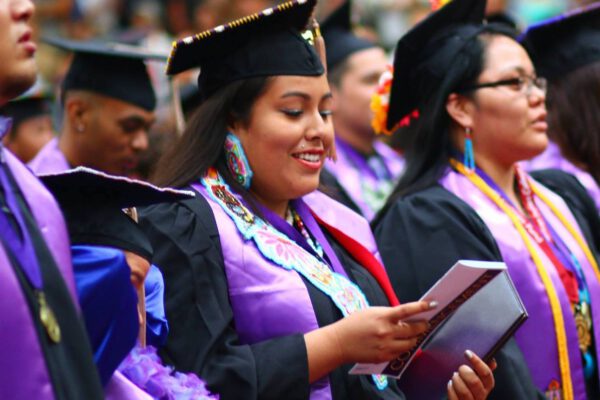Former ACE vice president of education, attainment and innovation Cathy Sandeen on how the demand for more and better information is shaping the 21st century college campus.
The American higher education community is well aware of the evolving demographic, economic, and technological forces presenting both challenges and opportunities to our colleges and universities. But one less-noticed but increasingly powerful driver of higher education change is the concept of consumerism.
Think of the famous image by artist Barbara Kruger, “I shop, therefore I am.” For better or worse, this now applies to higher education in a big way.
We are a nation of consumers, but we also are becoming better shoppers, increasingly more proactive, discerning and informed in our consumer behavior. This new generation of consumerism thrives on the deeply entrenched and common practice of sharing with and seeking out others’ opinions about products and services, made more possible and accessible by flood of ubiquitous online consumer reviews and ratings.
Traditionally, we assumed colleges and universities were somewhat insulated from the impact of consumerism, but that is no longer the case. When the president of the United States talks about “getting the biggest bang for your buck” from postsecondary education and implementing federal ratings of colleges and universities, the new higher education consumerism is front and center. When college presidents talk about their branding and positioning, that new consumerism is at play.
And regardless of whether colleges and universities are on the mark with their branding campaigns, the forces driving higher education consumerism are impacting those efforts in dramatically new and different ways.
Of course, the traditional concept of “brand” has existed within American higher education for decades. It’s hard to go far without seeing a sweatshirt, coffee mug, or car bumper emblazoned with the name of one of our institutions, evidence of the historically emotional power of higher education brand loyalty. Traditionally, cost and selectivity within any sector of higher education have been markers of a superior brand. But that may be changing as higher education consumerism takes hold. If so, what might that mean?
A recent Harvard Business Review blog post by Itamar Simonson and Emanuel Rosen helped frame my thinking. The post focused on consumer products and posited that there is a fundamental shift in how consumers make purchasing decisions and think about the marketing concepts of brand, loyalty and positioning. It doesn’t take much of a stretch to see how this applies to higher education.
Brand, loyalty, and positioning are concepts that were essential and successful when consumers did not have full access to detailed information about products or services. Traditionally, many consumers selected one brand over another based on its position relative to other brands. Brand and positioning were proxies for quality. They made purchases based on a brand name and once they found a brand that fit their criteria, they tended to be loyal and avoided new or lesser-known brands.
But in a highly connected and networked world brimming with grassroots consumer opinions, reviews, and ratings, the traditional role of brand may be weakening. As Simonson and Rosen observed in their post, “in a world with good, low-cost information, the customer can start from scratch each time” they make a purchase rather than relying on the shortcut of brand loyalty. What’s the lesson here for higher education? First, we know certain institutions’ name brands will remain strong, regardless of the effects of this next -generation consumerism. But what about institutions that are not in this category?
Our collective strength rests on the American higher education system’s institutional diversity. A broad array of choices are available to students, and colleges and universities are getting better at defining their particular strengths relative to the student and employer segments they serve or want to serve.
The lessons of next-generation consumerism represent both a caution and an opportunity. The caution is to pay attention to what is being said about your institution by the many and varied sources from which prospective students and families seek information. The opportunity is to proactively capture and aggregate that feedback, to listen and to respond to constructive comments and to openly share that information with the public—especially potential students. This is a way for less well-known higher education brands to compete effectively in a brand-oriented environment driven by the forces of modern consumerism.
The institution wins by recognizing these new demands for information and openness, but more importantly students win by finding the college, university, degree or programs that fits them best and can lead to their success. Institutions that ignore the role of next-generation consumerism in student choice behavior do so at their own peril.
If you have any questions or comments about this blog post, please contact us.


